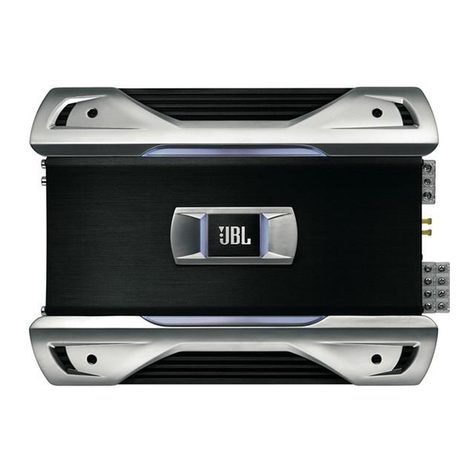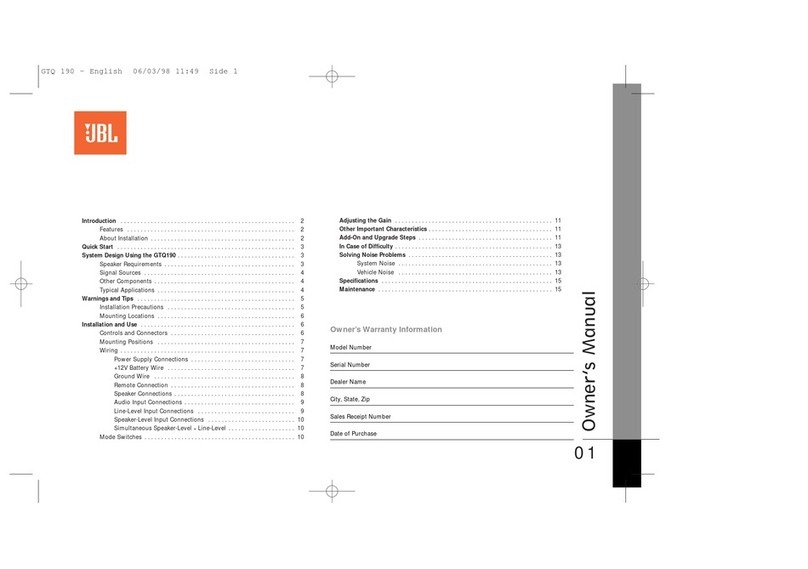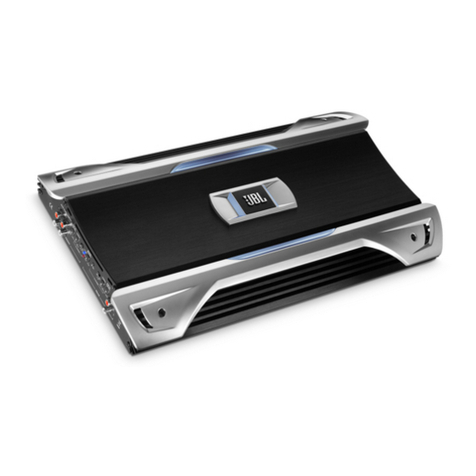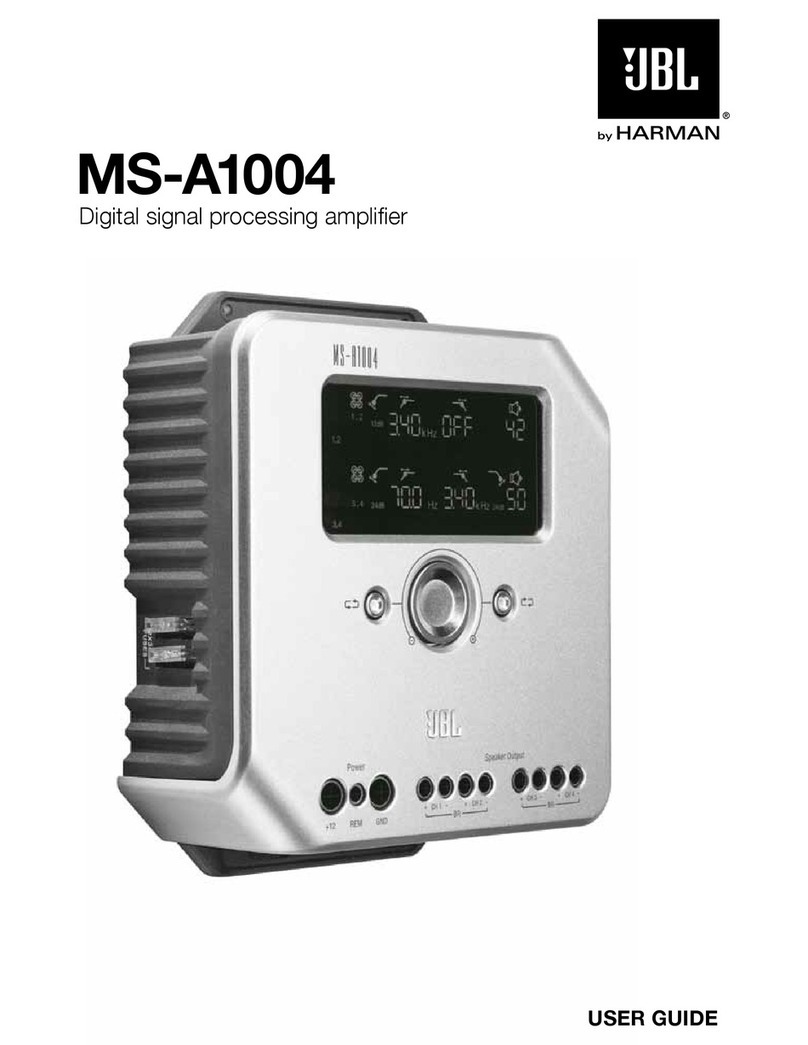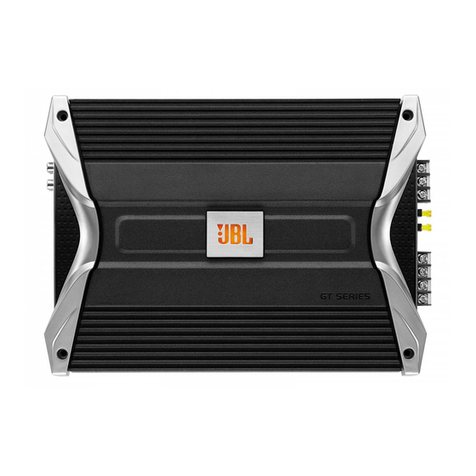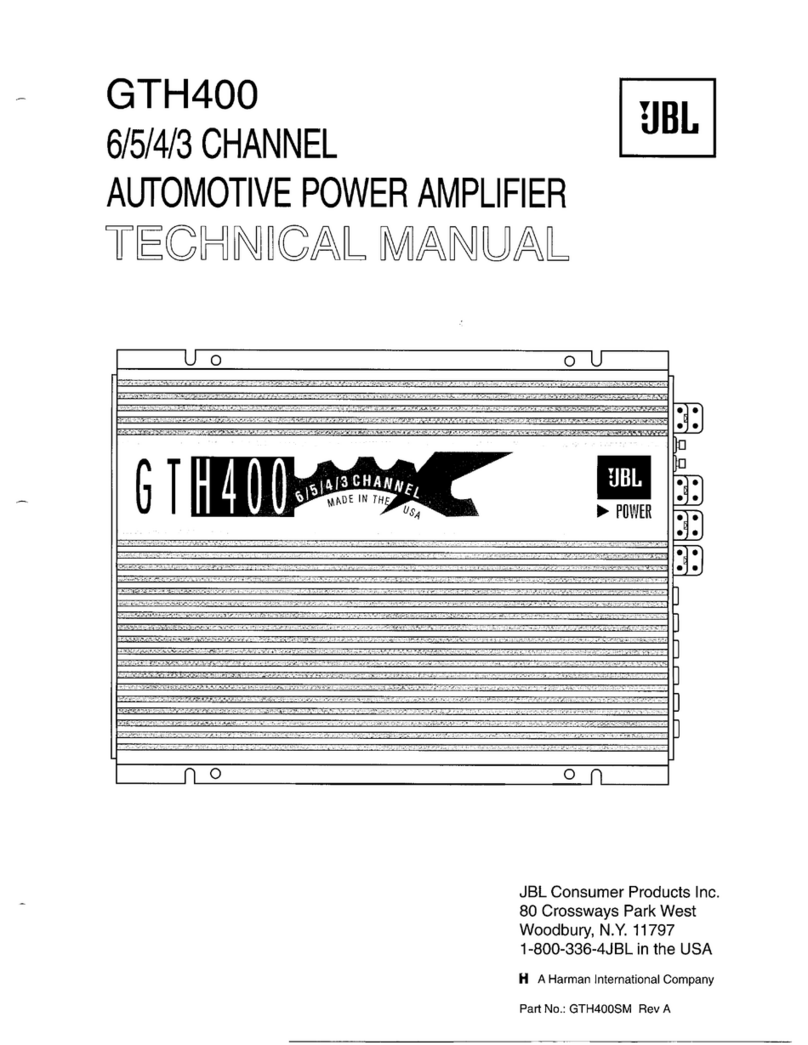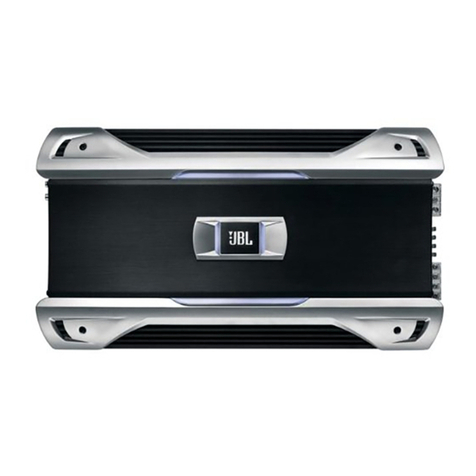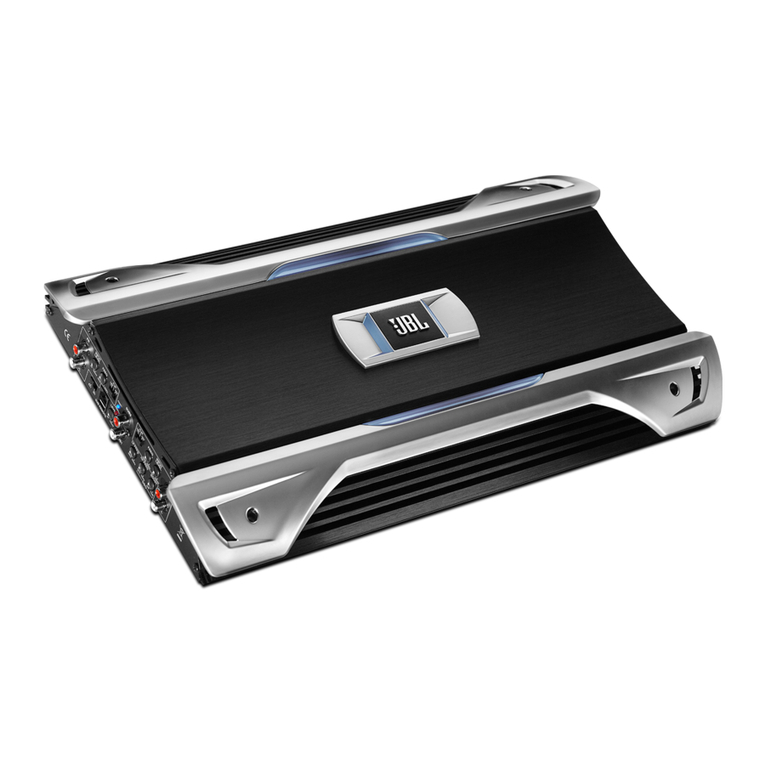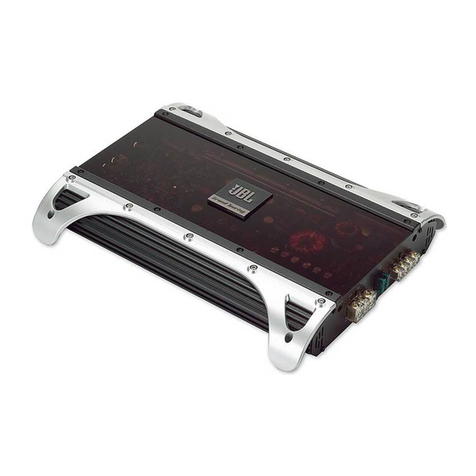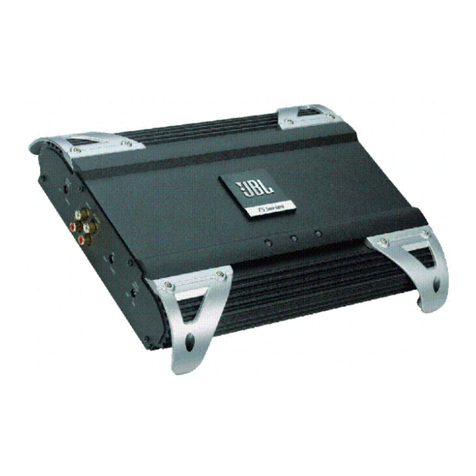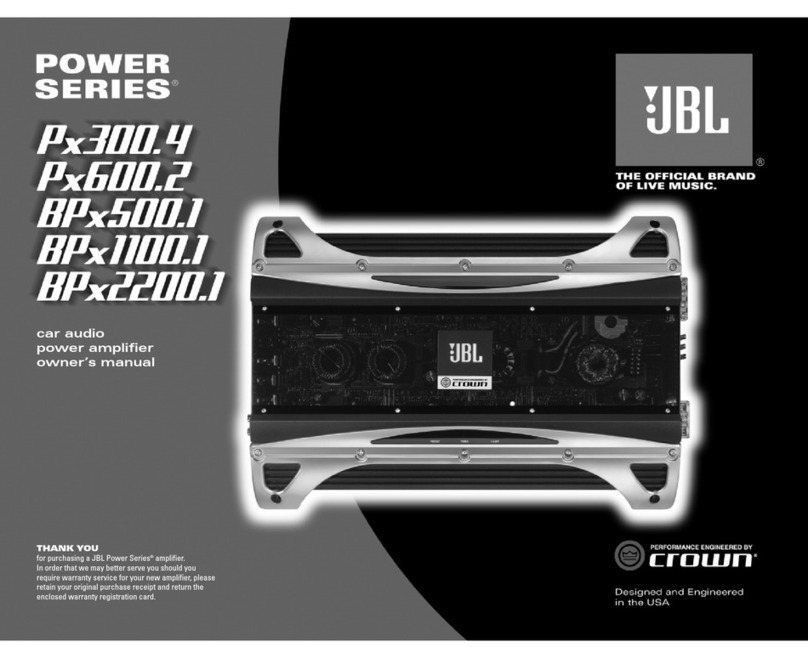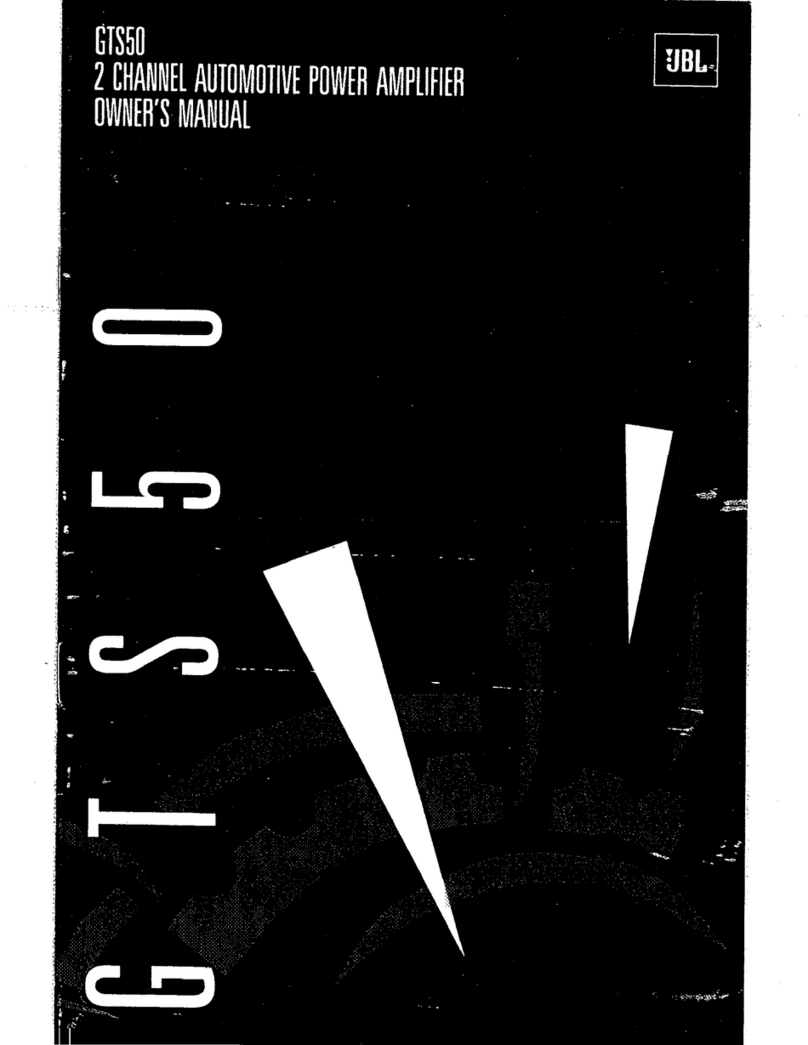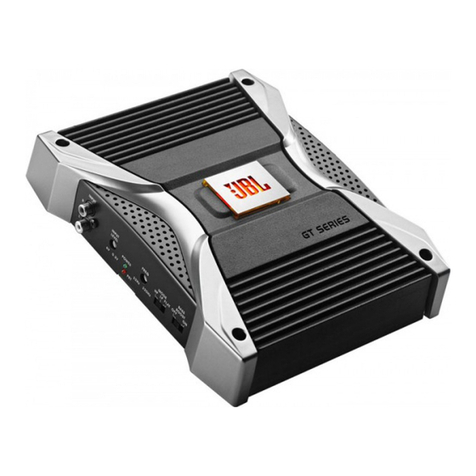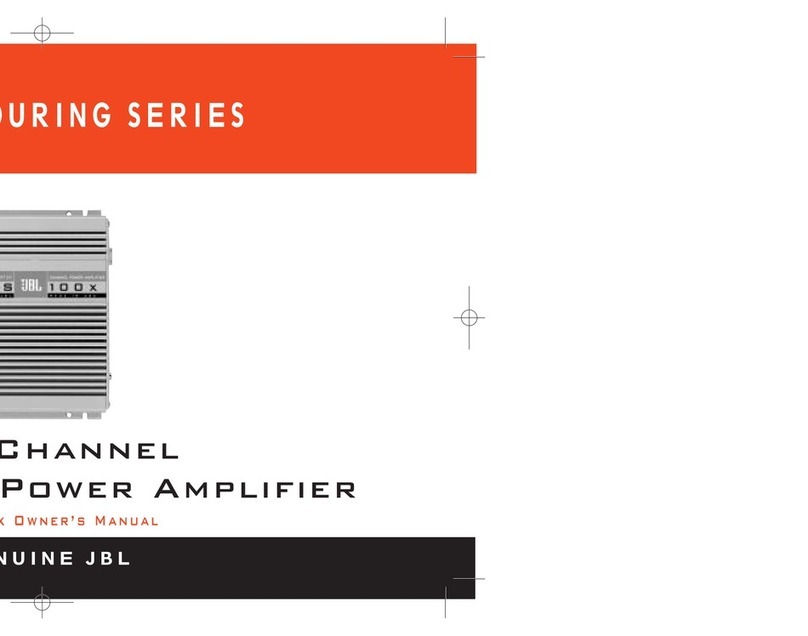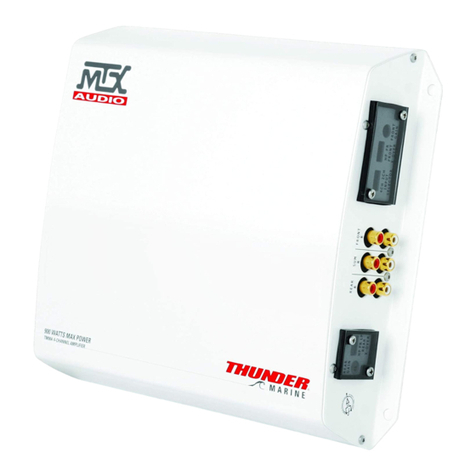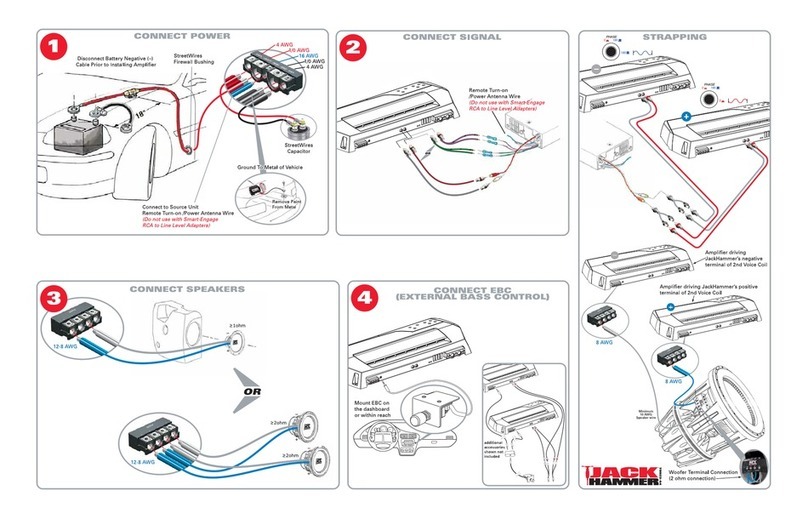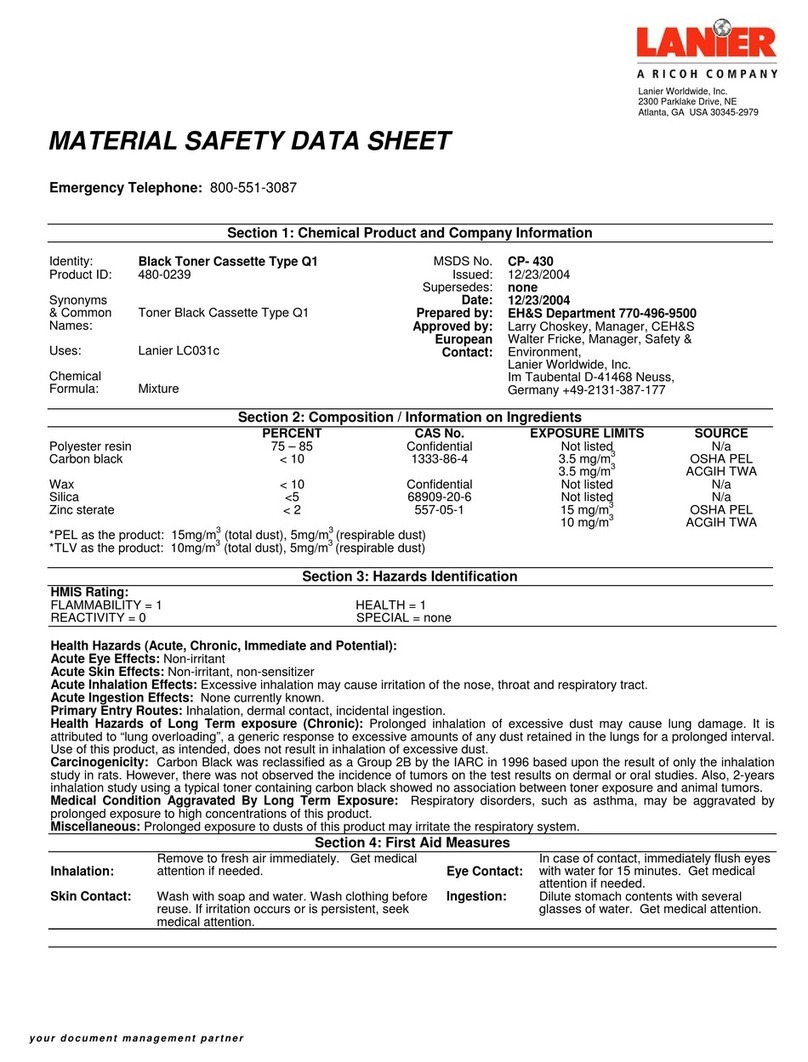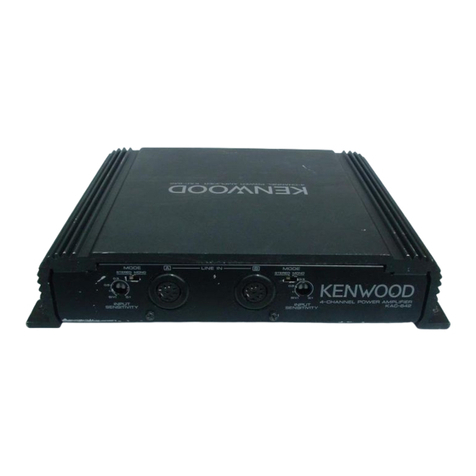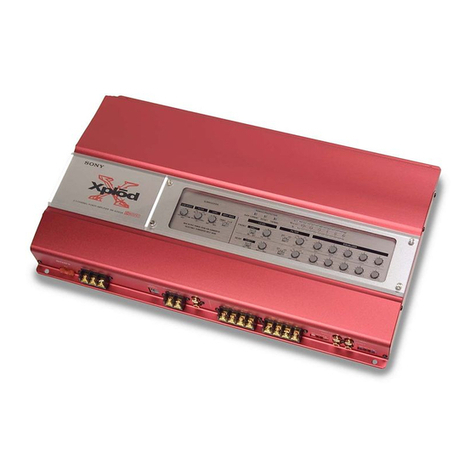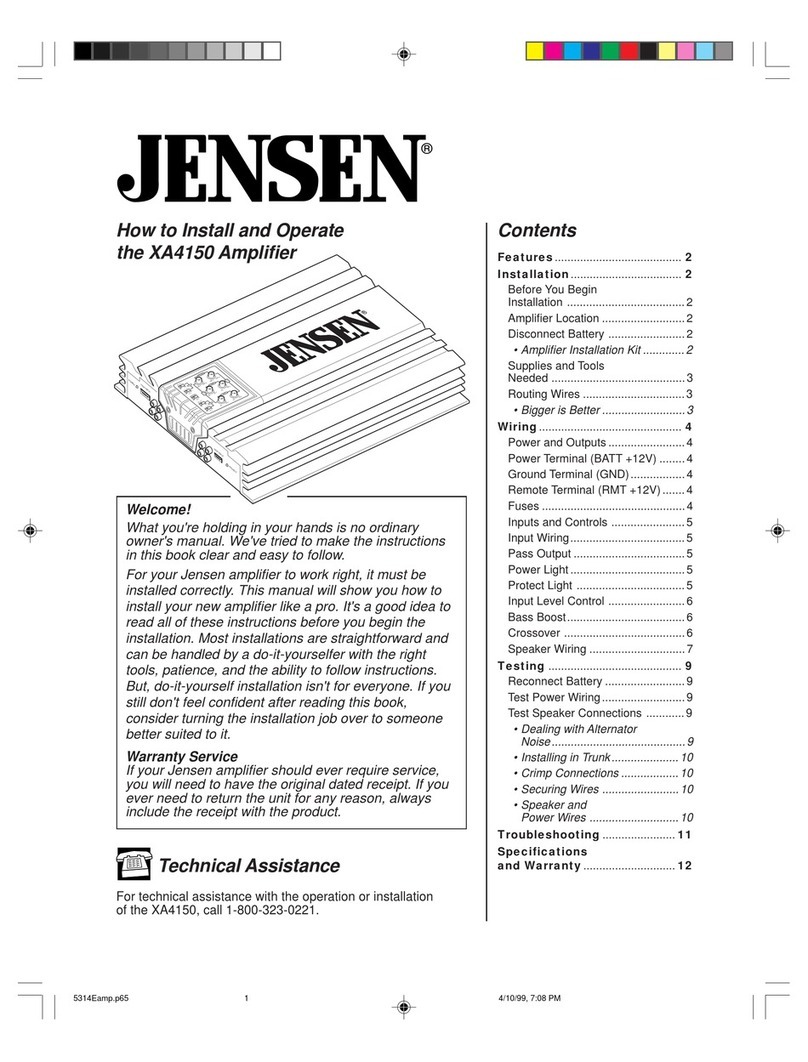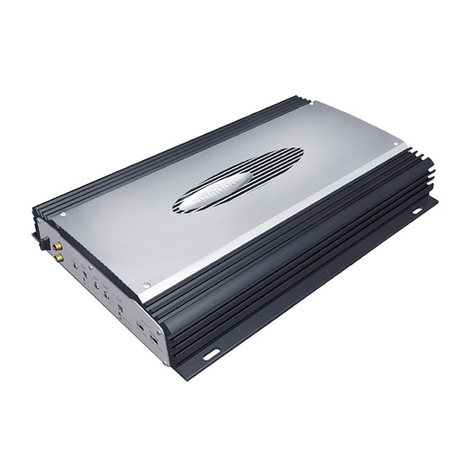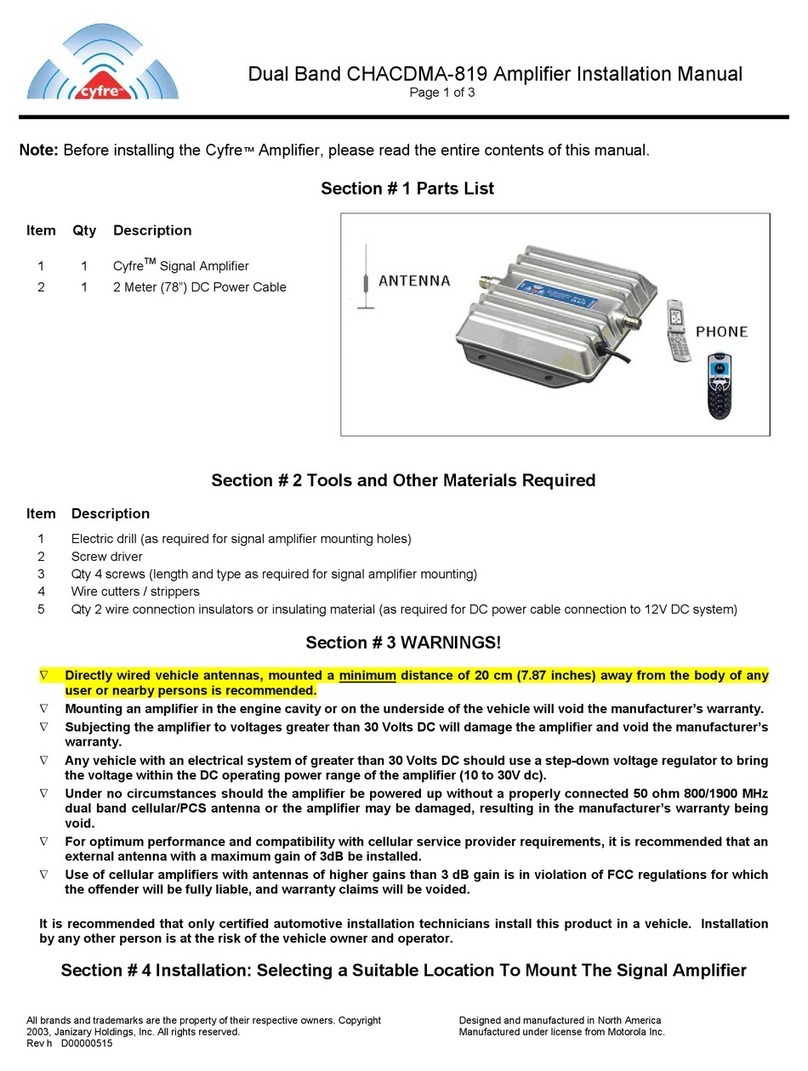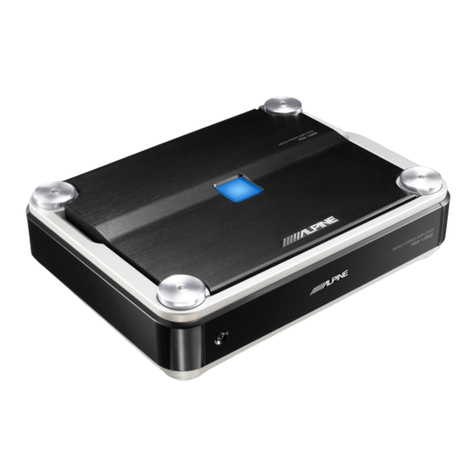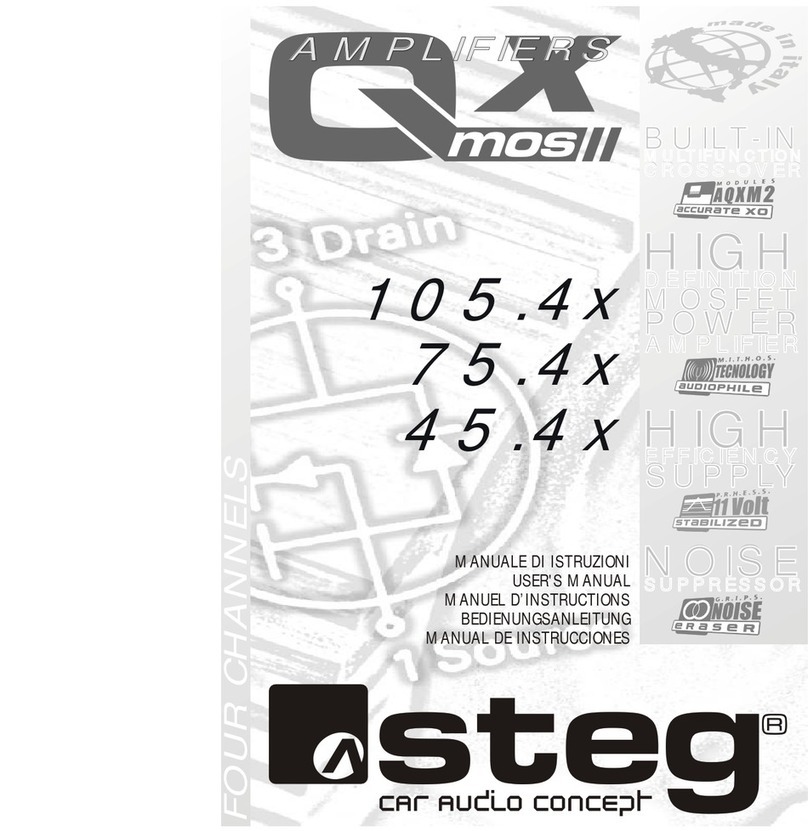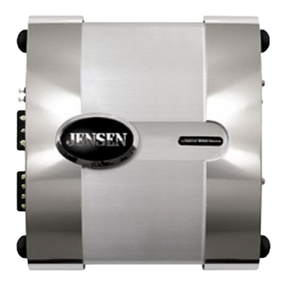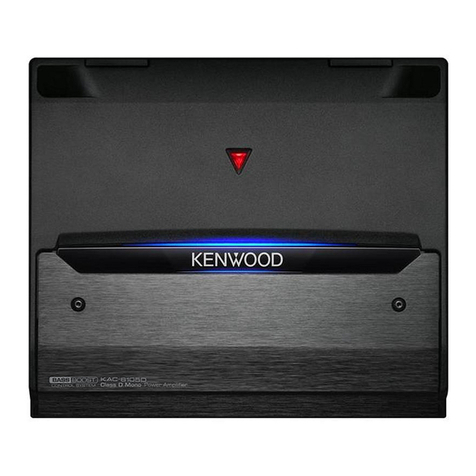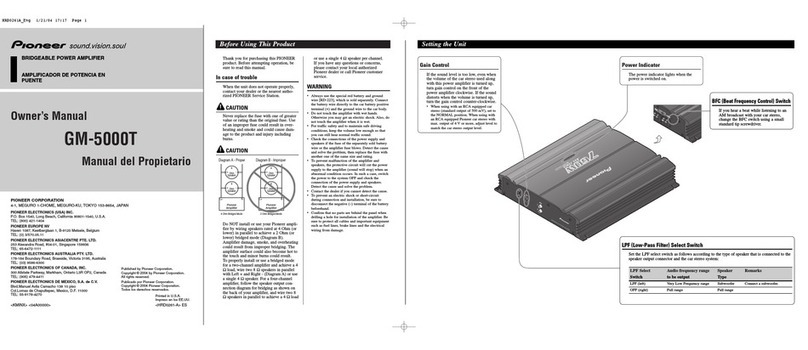
To Set the Input Level:
1. Move the input-level control to the Hi position (or Hi2 if you are connecting to a factory-installed sys-
tem with open-circuit protection).
2. Set the bass, treble, balance and fader controls on your head unit to the center (or flat) positions. Set
“loudness” to off. Defeat any sound-enhancement settings (such as DSP, surround sound
or EQ).
3. Insert the setup CD into your head unit and verify that the CD is playing.
4. Enter the setup mode by pressing CW and CCW buttons simultaneously for more than three seconds
until the input-level adjustment icon illuminates. The amplifier’s output will be muted (output-
level indicator will show “ ” in the display).
5. Turn the head unit’s volume control all the way up (to maximum output).
6. Using a small screwdriver on the level-adjustment dial next to the input switch, adjust the input-level
control up or down while watching the icons on the amplifier’s display panel.
If the green “up” arrow icon is lit, turn the control clockwise until the icon lights up.
If the red “down” arrow icon is lit, turn the control counterclockwise until the icon
lights up.
Note: If turning the control fully clockwise doesn’t cause the icon to light, move the input-
level control to the “Lo” position and try again.
Once the icon lights up, stop adjusting. Repeat the procedure for the input-level control on the other
channels. When both check marks light up, you have properly set the input levels for each channel pair.
To Enable or Disable Signal-Sensing Turn-On:
7. While in setup mode, enable or disable signal-sensing turn-on
by turning the Rotary Control clockwise or counterclockwise to
select “SEn On” or “SEn OFF” in the display. If you have
connected a remote turn-on lead, set to “SEn OFF.”
8. Turn the volume control on your head unit down and remove
the setup CD. If you miss or circumvent this step, the audio system will reproduce a loud test signal
that could damage your speakers when you exit the setup mode.
9. Press and release the CW and CCW buttons simultaneously to exit the setup mode.
10.Do not adjust the input-level controls further. Use the output-level control to balance the channel
levels and to “tune” the system.
SETTING THE FILTERS (CROSSOVERS)
There are 98 selectable frequencies for the low-pass and
high-pass filter settings. The selectable frequencies are detailed
in the table to the right.
Getting to the Crossover Settings
Press both CCW and CW buttons at the same time for less
than three seconds; release the buttons to activate the controls.
Use the CCW and CW buttons to navigate to your preferred
crossover-adjustment parameter.
How to Set a High-Pass Filter
Navigate to the high-pass lter frequency parameter. Using the
rotary encoder, select the desired cutoff frequency. Then navigate to
the high-pass lter slope parameter and, using the rotary encoder,
select the desired lter slope.
High-Pass Example
Use the CW and CCW buttons to navigate to the low-pass frequency
parameter and set to “OFF.”
How to Set a Low-Pass Filter
Navigate to the low-pass lter frequency parameter and, using the rotary encoder, select the desired
cutoff frequency. Then navigate to the low-pass lter slope parameter and, using the rotary encoder,
select the desired lter slope.
Low-Pass Example
Use the CW and CCW buttons to navigate to the high-pass frequency parameter and set to “OFF.”
Mode Function
SEn On Signal Sensing is ON
SEn OFF Signal Sensing is OFF
Available Crossover Frequency Settings
20.0Hz 40.0Hz 60.0Hz 80.0Hz 100Hz
21.0Hz 41.0Hz 61.0Hz 81.0Hz 101Hz
22.0Hz 42.0Hz 62.0Hz 82.0Hz 102Hz
23.0Hz 43.0Hz 63.0Hz 83.0Hz 103Hz
24.0Hz 44.0Hz 64.0Hz 84.0Hz 104Hz
25.0Hz 45.0Hz 65.0Hz 85.0Hz 105Hz
26.0Hz 46.0Hz 66.0Hz 86.0Hz 106Hz
27.0Hz 47.0Hz 67.0Hz 87.0Hz 107Hz
28.0Hz 48.0Hz 68.0Hz 88.0Hz 108Hz
29.0Hz 49.0Hz 69.0Hz 89.0Hz 109Hz
30.0Hz 50.0Hz 70.0Hz 90.0Hz 110Hz
31.0Hz 51.0Hz 71.0Hz 91.0Hz 115Hz
32.0Hz 52.0Hz 72.0Hz 92.0Hz 120Hz
33.0Hz 53.0Hz 73.0Hz 93.0Hz 125Hz
34.0Hz 54.0Hz 74.0Hz 94.0Hz 130Hz
35.0Hz 55.0Hz 75.0Hz 95.0Hz 135Hz
36.0Hz 56.0Hz 76.0Hz 96.0Hz 140Hz
37.0Hz 57.0Hz 77.0Hz 97.0Hz OFF
38.0Hz 58.0Hz 78.0Hz 98.0Hz
39.0Hz 59.0Hz 79.0Hz 99.0Hz
kHz
24dB
24dB
10
